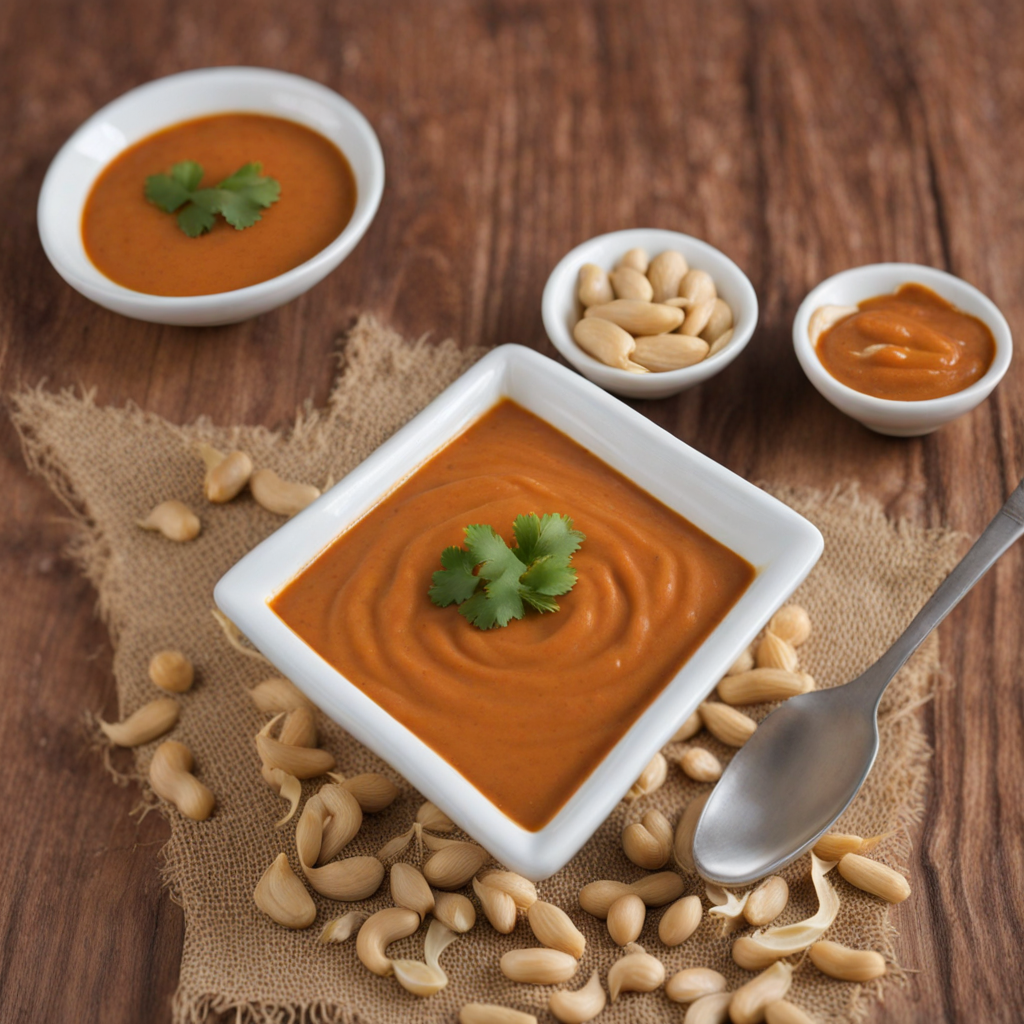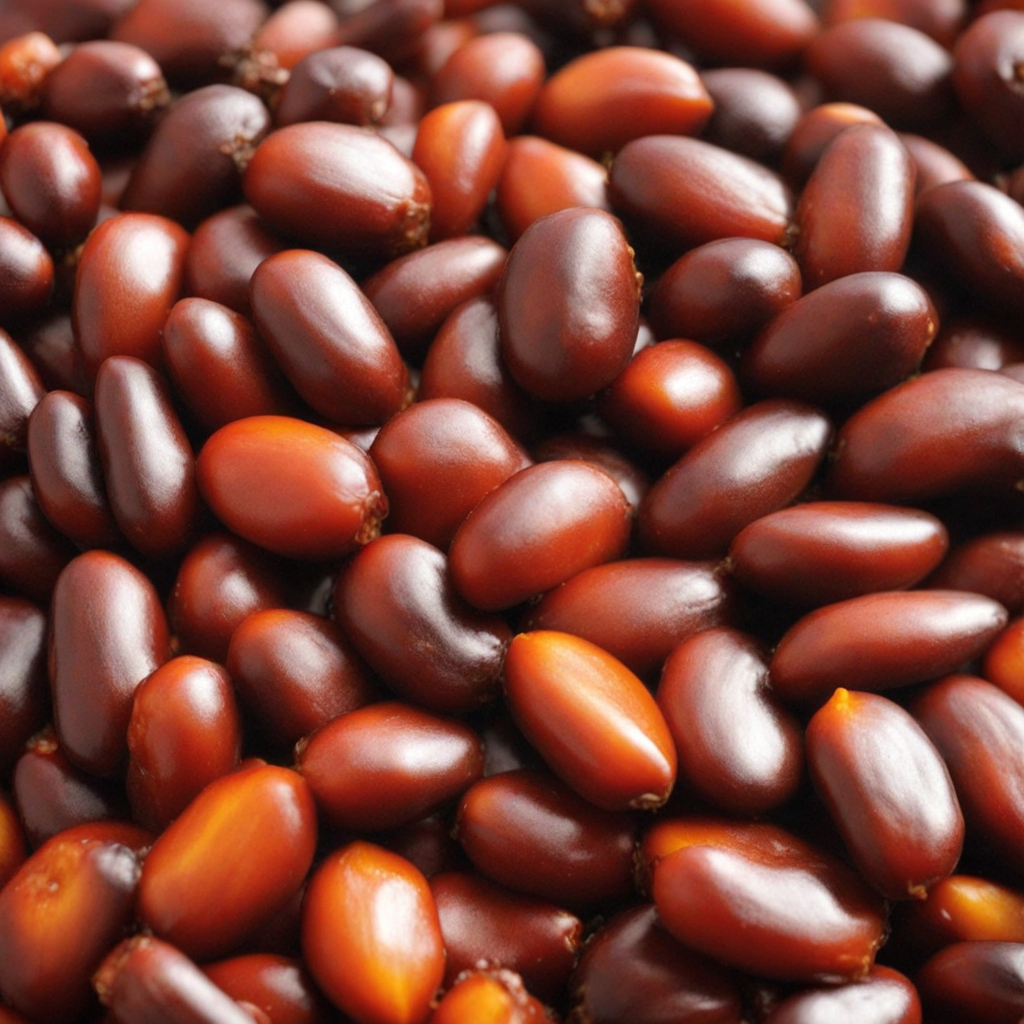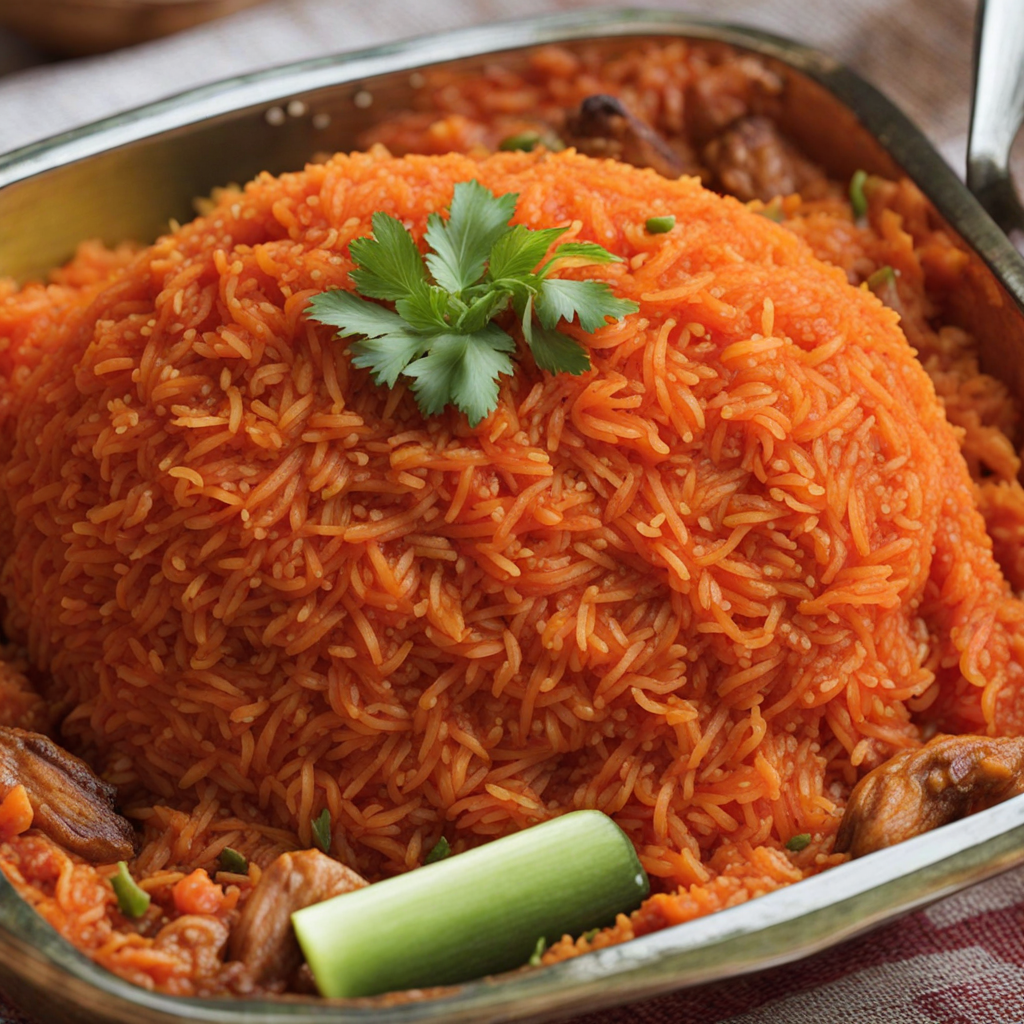Peanut Sauce
Peanut sauce, a beloved condiment in Guinea-Bissau, is a rich and flavorful blend that embodies the essence of West African cuisine. This sauce is primarily made from ground peanuts, which are roasted to deepen their natural flavor before being blended into a creamy paste. The smooth texture of the peanuts serves as a perfect base, allowing the incorporation of various spices and ingredients that elevate its taste profile. Common additions include garlic, onion, and a hint of chili, creating a balance of nuttiness and warmth that tantalizes the taste buds. In Guinea-Bissau, peanut sauce is often used to accompany a variety of dishes, providing a delicious contrast to the hearty staples of rice, cassava, or yams. It can be drizzled over grilled meats or used as a dip for fresh vegetables, enhancing the overall dining experience with its complex flavors. The sauce not only adds richness to the meal but also brings a touch of traditional culinary heritage, connecting diners to the vibrant culture of the region. The versatility of peanut sauce allows it to be enjoyed in numerous ways, making it a staple in many households. Whether served warm or at room temperature, its inviting aroma and creamy consistency make it irresistible. For those eager to explore new tastes, peanut sauce is an excellent gateway into the world of West African flavors, offering a unique combination of comfort and excitement that leaves a lasting impression on the palate.
How It Became This Dish
The Journey of Molho de Amendoim: A Culinary Heritage from Guinea-Bissau Origins and Ingredients Molho de Amendoim, or peanut sauce, is a dish deeply embedded in the culinary tradition of Guinea-Bissau, a West African nation known for its diverse cultures and rich history. The roots of this sauce can be traced back to the indigenous practices of the region, where peanuts, or groundnuts, have been cultivated for centuries. Peanuts were first domesticated in South America, but they made their way to Africa through transatlantic trade routes, becoming a staple crop in many West African countries, including Guinea-Bissau. The primary ingredients of Molho de Amendoim are roasted peanuts, which are ground into a fine paste and often mixed with water or broth to achieve a creamy consistency. Additional ingredients may include spices such as garlic, chili peppers, and sometimes tamarind or tomatoes, which enhance the flavor profile. The versatility of the sauce allows it to accompany various dishes, particularly rice, fish, chicken, and vegetables, making it a vital element of everyday meals in many Bissau-Guinean households. Cultural Significance In Guinea-Bissau, food is more than mere sustenance; it is a means of cultural expression and identity. Molho de Amendoim is a prime example of how culinary practices intertwine with social customs and traditions. The dish is often present at communal gatherings, celebrations, and family meals, symbolizing hospitality and abundance. Preparing Molho de Amendoim can be a communal activity where families come together, sharing stories and laughter while grinding peanuts and preparing the sauce. For many Bissau-Guineans, the act of cooking is an art form, and traditional recipes are passed down through generations, often accompanied by stories of the past. Molho de Amendoim, with its rich flavor and creamy texture, embodies the spirit of communal living and the importance of sharing meals. It also reflects the agricultural practices of the region, where peanuts are a cash crop for many rural farmers, thus linking food production with economic sustenance. Historical Development The history of Molho de Amendoim is intertwined with the broader historical narrative of Guinea-Bissau. The region has seen various influences due to its historical connections with trade, colonization, and migration. The Portuguese colonization of Guinea-Bissau, which began in the late 15th century and lasted until the mid-20th century, introduced new agricultural practices and culinary influences. However, the core of the Bissau-Guinean culinary tradition remained rooted in indigenous practices, with dishes like Molho de Amendoim continuing to thrive. During the colonial period, the integration of Portuguese ingredients and cooking techniques began to influence local cuisine. Though Molho de Amendoim retained its essence, the incorporation of new flavors and methods led to variations that showcased a blend of cultural influences. For example, the addition of ingredients like tomatoes or spices could be seen as a reflection of the changing culinary landscape. The struggle for independence, culminating in the 1973 liberation war, further shaped the cultural identity of Guinea-Bissau, including its food. The war led to a heightened sense of nationalism, and traditional foods became symbols of resistance and unity. Molho de Amendoim, as a dish that many could prepare with locally available ingredients, became a staple for feeding families during difficult times, reinforcing its role as a source of comfort and sustenance. Modern Context and Global Recognition In contemporary Guinea-Bissau, Molho de Amendoim continues to be a beloved dish, celebrated for its flavor and nutritional value. As globalization has increased, the dish has found its way into the broader African diaspora and even beyond, introducing international audiences to Bissau-Guinean cuisine. Chefs and food enthusiasts have begun to explore African culinary traditions, leading to a resurgence of interest in dishes like Molho de Amendoim. In recent years, the rise of food tourism has also played a role in bringing attention to Guinea-Bissau's culinary heritage. Travelers seeking authentic experiences often seek out local dishes, and Molho de Amendoim stands out as a highlight due to its unique taste and cultural significance. With the growing awareness of African cuisines on the global stage, Molho de Amendoim has gained recognition as a dish that not only tantalizes the palate but also tells a story of resilience and cultural pride. Furthermore, the health benefits of peanuts have gained recognition worldwide, aligning with the increasing trend toward plant-based diets. Peanut sauce is now appreciated for its nutritional value, being rich in protein, healthy fats, and essential vitamins. This has led to its incorporation into various modern culinary contexts, from fusion cuisine to health-conscious menus. Conclusion: A Legacy of Flavor and Identity The journey of Molho de Amendoim from its indigenous roots to its place in contemporary cuisine is a testament to the resilience and richness of Guinea-Bissau's culinary heritage. It is a dish that embodies the spirit of the people, their history, and their connection to the land. As it continues to evolve and adapt to modern tastes while retaining its traditional essence, Molho de Amendoim remains a symbol of cultural identity and a delicious reminder of the power of food to bring people together. Today, as more people discover the flavors of Guinea-Bissau through dishes like Molho de Amendoim, there is a renewed appreciation for the culinary traditions of West Africa. It serves not only as a delicious accompaniment to meals but also as a bridge connecting generations, cultures, and communities, ensuring that the legacy of this humble yet flavorful sauce endures for years to come.
You may like
Discover local flavors from Guinea-bissau







